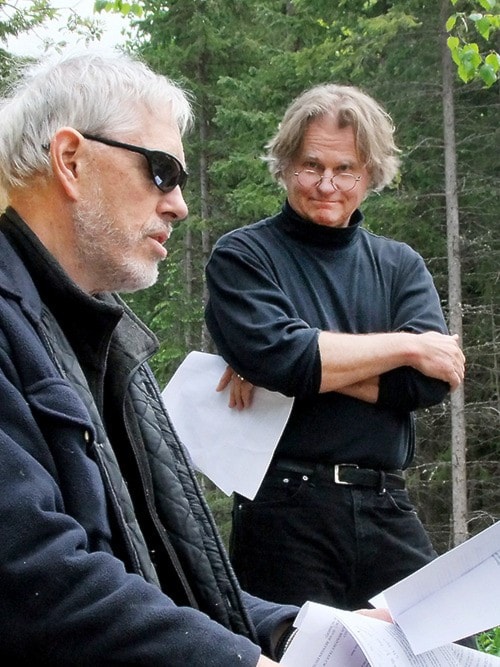CLEARWATER – One of the world’s best know anthropologists and ethnobotanists was in Clearwater last week to help kick off this season’s events in Wells Gray World Heritage Year.
A capacity crowd of over 260 people turned out to listen to a presentation by Davis in the Pit at Clearwater Secondary School on Thursday evening, May 30.
Originally from Vancouver, Davis now makes his home in the mountains near Dease Lake in northwest B.C. (when he isn’t travelling the world in his role as explorer in residence with National Geographic Society).
A well-known environmental spokesperson, he formerly made his living as a logger and a big game guide.
He doesn’t seem to be too impressed with some environmental groups, such as Greenpeace, or with mining companies, such as Imperial Metals, which proposes to construct a major copper mine near his home.
Davis had his first encounter with Greenpeace when he was working in a hunting camp in Spatsizi Provincial Park. The environmental group helicoptered in and attempted to shut the camp down. When he objected that some of the things they were broadcasting weren’t true, he was told it was only public perception that mattered.
More recently he has been battling Imperial Metals and its proposed Red Chris mine. The tailings pond for the mine would be upstream from the lake his home draws its drinking water from.
Imperial Metals is the same company that is developing a proposed lead-zinc mine at Ruddock Creek near Tum Tum Lake east of Avola.
Ian Smith, the former CEO of Yellowhead Mining, had engineered the Red Chris project before starting with Yellowhead.
“Who has the right to talk for the land?” Davis asked. “Greenpeace and Imperial Metals assume they do. The problem is, there is no measure of the cost to the land or to the commons for their decisions.”
The people who live on the land should have first say on what happens to it, he felt.
“Fidelity to the land is all that counts,” he said. Quoting another environmentalist, Davis told the audience, “The most important thing you can do for the environment is to stay put.”
Davis calls the area where he lives, and where the Red Chris mine would be located, the Sacred Headwaters, because it is the source of three major salmon rivers: the Stikine, the Nass and the Skeena.
Creating an open pit mine in such an area would be the equivalent of drilling for oil in the Sistine Chapel, he said.
He illustrated his talk with a slideshow of spectacular photographs of the area.
Davis holds degrees in anthropology and biology and received his PhD in ethnobotany from Harvard University. He spent over three years in the Amazon and Andes as a plant explorer, living among 15 indigenous groups in eight Latin American nations while making some 6,000 botanical collections. His work later took him to Haiti to investigate folk preparations implicated in the creation of zombies, an assignment that led to his writing The Serpent and the Rainbow (1986), an international best seller later released as a motion picture.
He recently accepted an offer by University of British Columbia to become a tenured professor there.
Nearly 100 attended a second presentation and ribbon-cutting by Davis on Friday morning at Upper Clearwater Hall.
